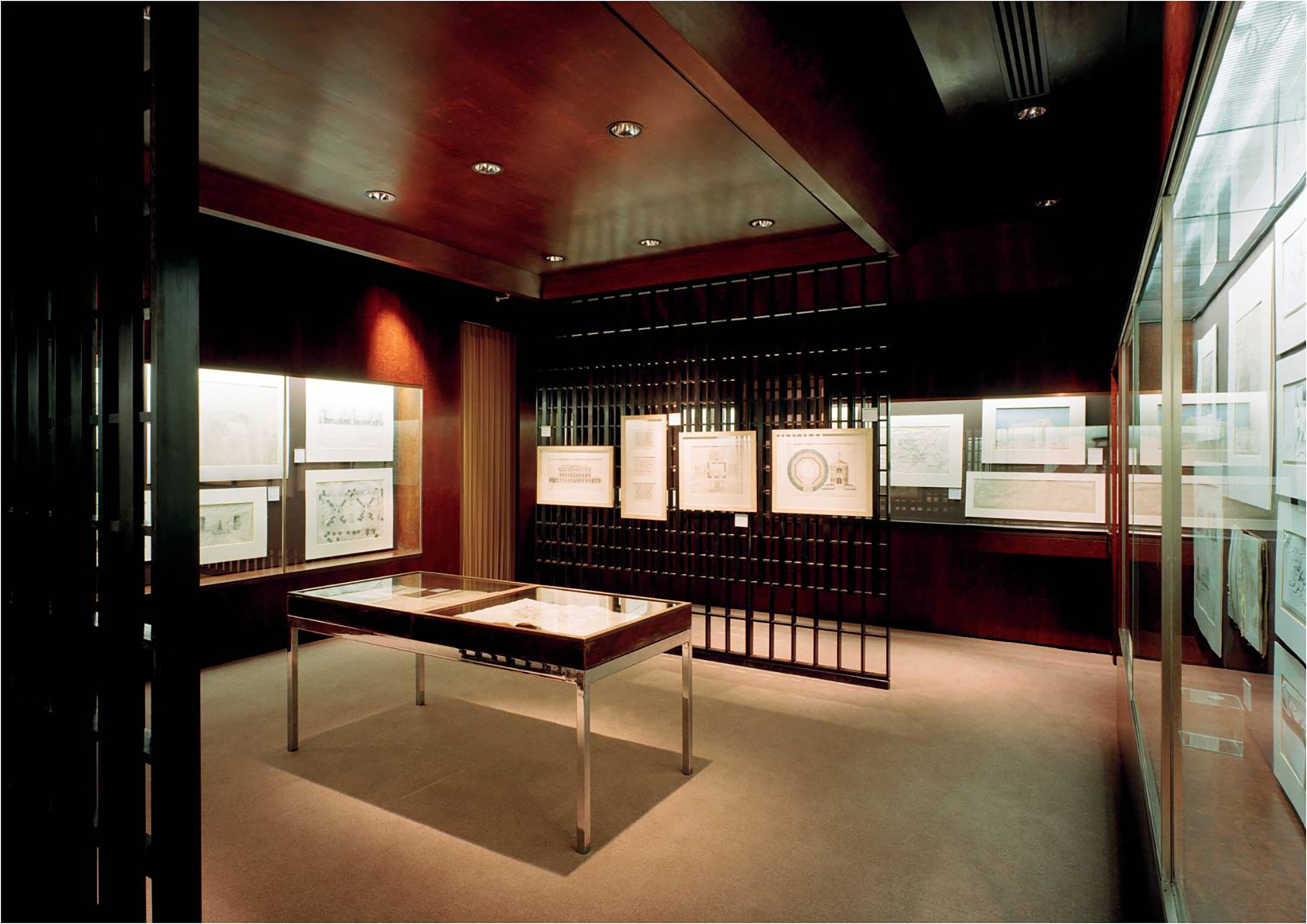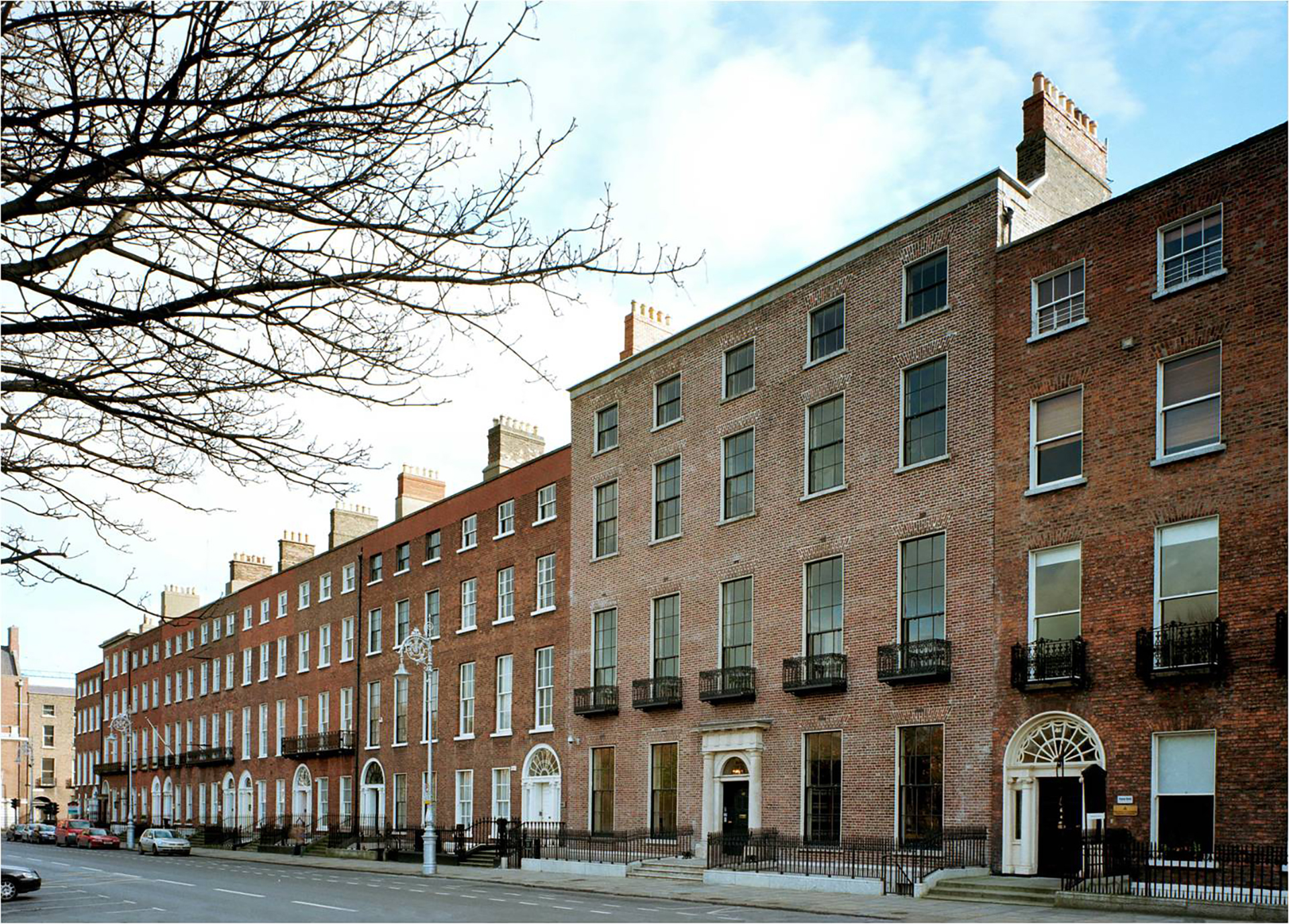The genesis of Emo Court, Co. Laois, is to be found in the cultivated sensibility of John Dawson, Viscount Carlow, later 1st Earl of Portarlington. An accomplished artist, whose outstanding library was stocked with purchases from his grand tour, Carlow was responsible for bringing James Gandon to Ireland to aggrandize Dublin. He himself employed Gandon from 1780 for Emo, where an early eighteenth-century Palladian mansion (Dawson Court) built by his grandfather, Ephraim Dawson, sat in a formal landscape. Gandon produced a succession of designs for a new mansion, for which work began in 1790. Gandon’s Emo, palatial in scale, had formal grandeur and restrained neoclassical panache, but by the time of Portarlington’s death eight years later, only the shell, set within a landscape that had been remodelled in an informal style, was completed; the interior was un-plastered and there were no porticos.
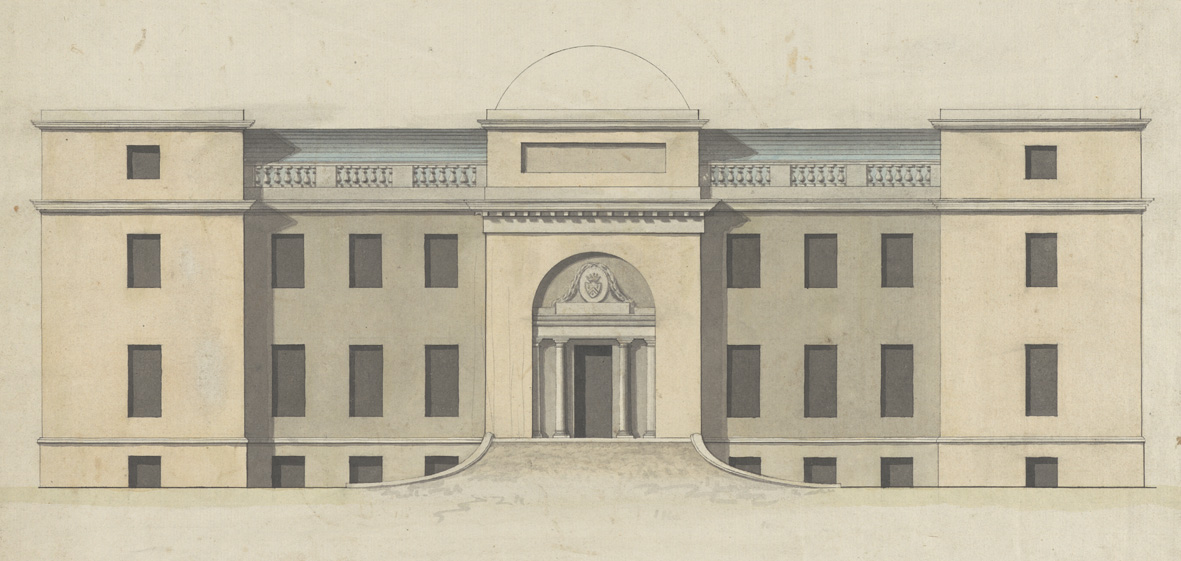
Portarlington’s successors would employ several architects in their attempts to complete the project. Indecision and financial problems resulted in unexecuted schemes and what became a long-drawn-out process of completion. The 2nd Earl commissioned the Dublin-based Williamson brothers to design interior and exterior schemes, of which only the entrance portico seems to have been realized. The Williamsons were succeeded by the English architect, Lewis Vulliamy, who exhibited his designs for Emo at the Royal Academy in 1834. He produced working drawings for the north portico, and it is likely that the surviving decorative schemes in the hall and dining room were executed to his designs.
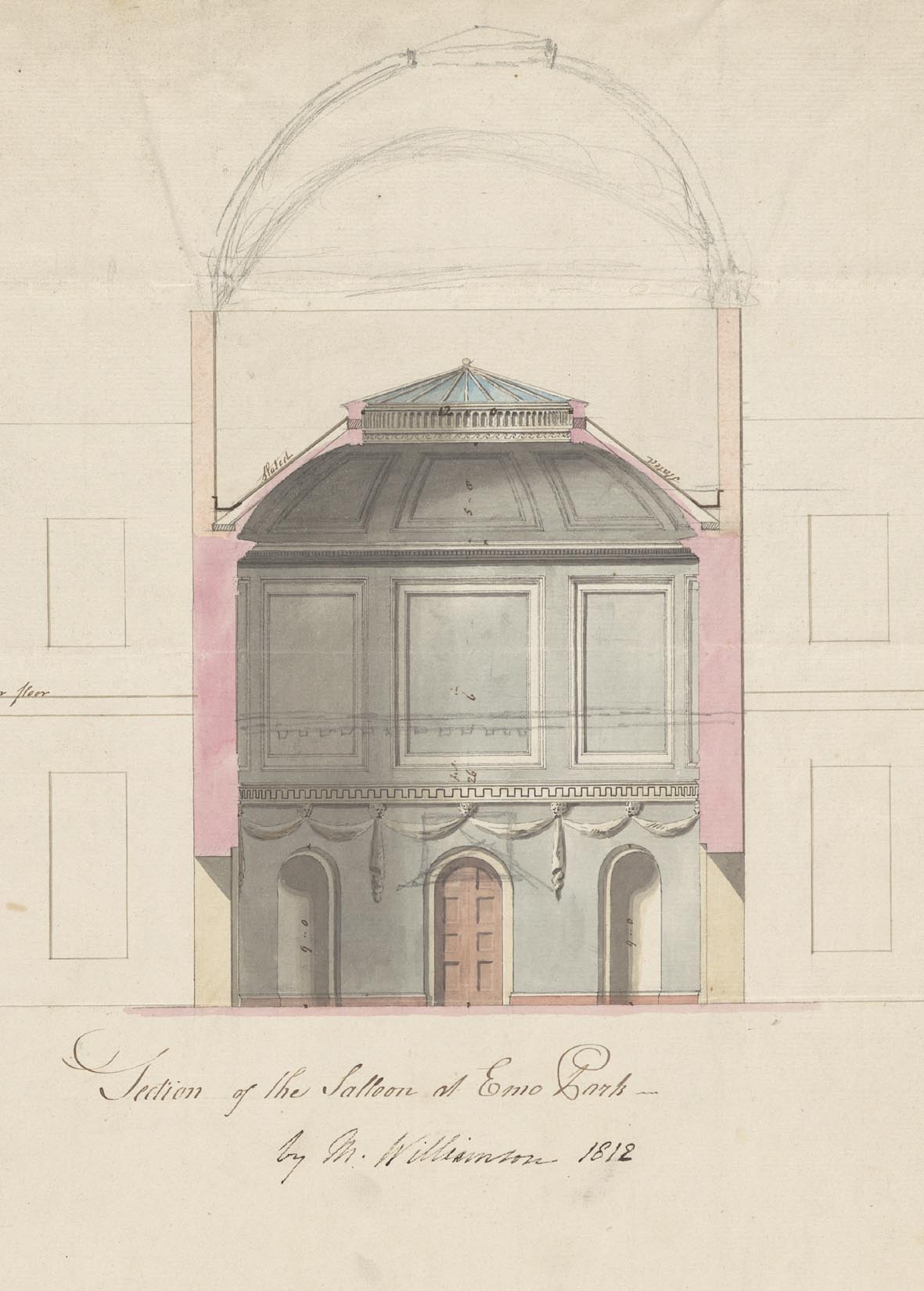
Other work on the interior was curtailed when the 2nd Earl ran out of funds; rooms were left filled with abandoned scaffolding and heaps of mortar and tools. The 3rd Earl, who succeeded in 1845, sold part of the indebted estate through the Encumbered Estates Court in 1852 and used the proceeds to complete the house. He employed William Caldbeck to decorate the rotunda, drawing room and library, build a bachelor’s wing above a new kitchen block and erect gate lodges. This work was completed in 1861.

The designs of the Williamsons, Vulliamy and Caldbeck introduced nineteenth-century taste for opulence and eclecticism to Emo. In the 1970s, after a period (1930 to 1969) as a Jesuit novitiate when many interior items were removed (but not lost), Emo was restored by Cholmeley Dering Cholmeley-Harrison to its mid-nineteenth-century state, so that it now reflects the various impulses that went into its creation. Cholmeley-Harrison donated the house and demesne to the State in 1994.
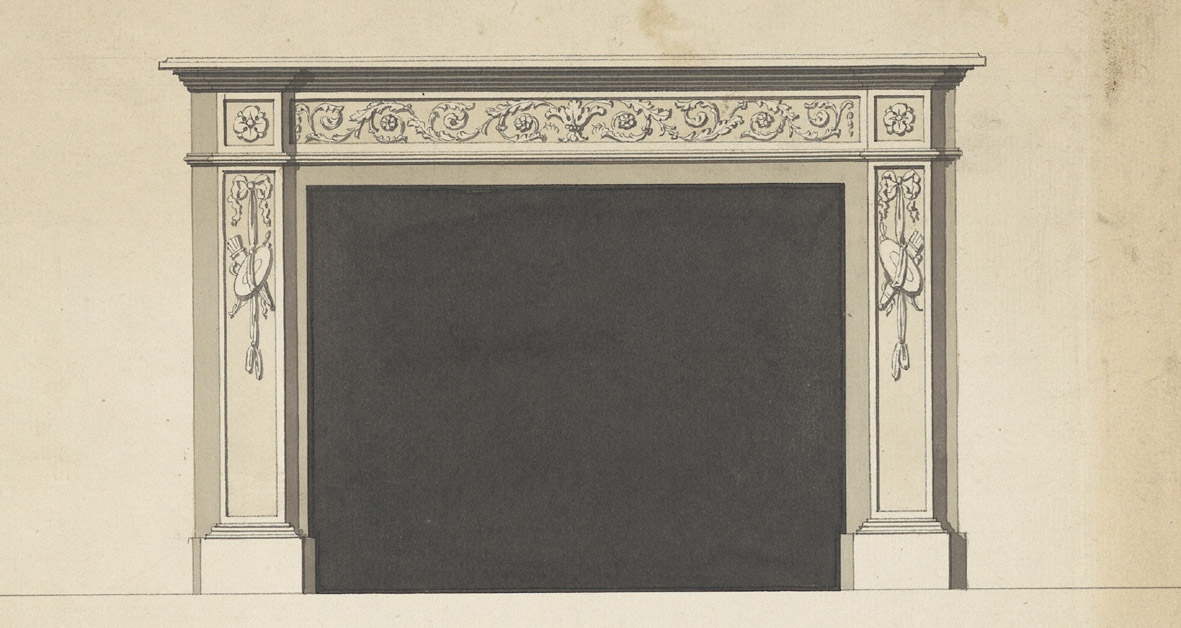
The drawings in this exhibition, given to the Irish Architectural Archive in 1991 by Cholmeley-Harrison, return us to the uncertainties of the past: ideas entertained, altered and rejected; concepts developed and realised.
The Archive is very grateful to Mary Heffernan and the OPW for support in making this exhibition possible.
Judith Hill, February 2019
